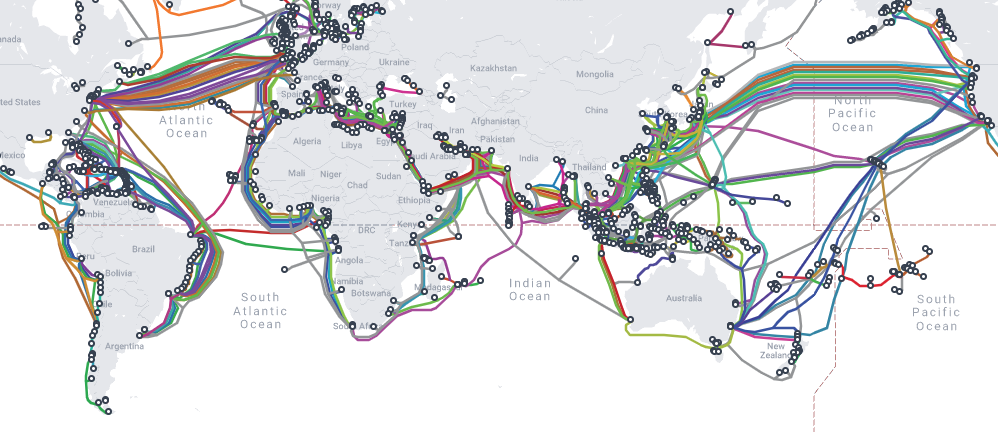How has COVID-19 affected the Internet around the world? We’ve just launched the report Impact of COVID-19 on the Internet in Bangladesh, Bhutan, and Pakistan, one of our many studies that look at the regional impact of the global pandemic. Here are some key findings from the latest report.
Digital Transformation Cannot Happen without Robust and Resilient Internet Infrastructure
We are now in the third year of the COVID-19 crisis, yet the problem is far from over. As work and life continue to move online, digitalization across sectors and industries is accelerating. This makes the need for a robust and resilient Internet infrastructure urgent for every economy.
At the onset of the pandemic in 2020, Bangladesh, Bhutan, and Pakistan experienced a 20-30% surge in data traffic due to the unprecedented uptake of remote education, work-from-home, e-commerce, e-government services, and content consumption on social media and streaming platforms.
Our report shines light on what happens when the Internet infrastructure is weak. Conducted in Southwest Asian countries, the report is full of suggestions on how to improve Internet infrastructure.
Low Speed and Poor Internet Quality Put People at Risk of Being Left Behind
According to a user survey conducted in these three countries, Internet infrastructure endured traffic spikes at the expense of service quality for the people using it.
Respondents reported unsatisfactory speed, reliability, and Internet connection steadiness—even when they paid more—especially in rural areas. At least 60% of the survey respondents found it challenging to work or learn from home due to the slow speeds and frequent disconnections. This figure rose to 85% in rural Bangladesh and 100% in rural Pakistan.
Pre-pandemic broadband speed in all three countries was already well below the average for South and Southwest Asia (the exception being Pakistan’s mobile broadband speed).
There Must Be a Strategic Shift away from Short-Term Relief Measures
During the pandemic, governments and service providers in Bangladesh, Bhutan, and Pakistan launched numerous emergency initiatives–by providing additional data volumes, special tariffs, and free access to health and educational resources; extending the validity of prepaid services; and offering flexible payment options.
These initiatives helped users and small businesses transition to online services, but they were temporary relief measures. The benefits disappeared as fast as they came. Yet, remote learning and work from home have continued, with more services increasingly moving online—while businesses are expected to follow the digital transformation trend.
Those without access to high-speed and reliable Internet need more support than ever. Otherwise, they risk being left behind.
We Need a Multi-Dimensional and Collaborative Approach to Bridge the Digital Divide
Our country-by-country analysis in the report looks at why there is poor quality of Internet service and why the Internet is not accessible and affordable for everyone in this region.
It highlights issues that make the Internet expensive and inaccessible, including: the lack of submarine fiber-optic links, low fixed-line penetration, low spectrum allocation, lower fiber-to-tower ratio, an underdeveloped digital content ecosystem, and lack of Internet exchange points (IXPs).
Another report, looking at the impact of COVID-19 on Internet performance in Afghanistan, Nepal and Sri Lanka looked at user perspectives, network resilience, performance, and the state of Internet infrastructure.
Both studies offer valuable insights on how to improve Internet access, affordability, and quality of service—and how to accelerate pandemic recovery as well as social and economic progress.
Here are some of our key recommendations:
Addressing the digital divide requires policy and regulatory reform. In Bhutan, Bangladesh, and Pakistan, broadband policies were last approved in 2014, 2009, and 2004, respectively. Our report recognizes Pakistan’s efforts in drafting a new legislation. It also recommends consistent review and update to Internet-related policies and regulations in all three countries.
Strong Internet Infrastructure is the foundation for digital transformation. People can strengthen Internet infrastructure by deploying fiber-optic networks and connecting towers to fiber, building fixed-line infrastructure, allocating additional spectrum, and establishing IXPs through multistakeholder partnerships.
People must work together to develop local digital services, content innovation, and skills. To drive better Internet usage and foster socioeconomic growth across sectors, people must strengthen local digital services, encourage local content production and distribution, and strengthen the skills of the working population to manage technical operations.

